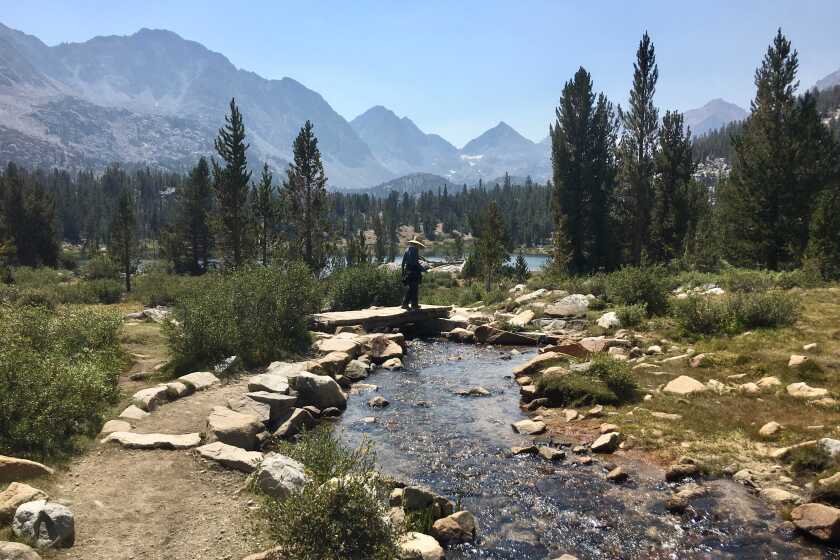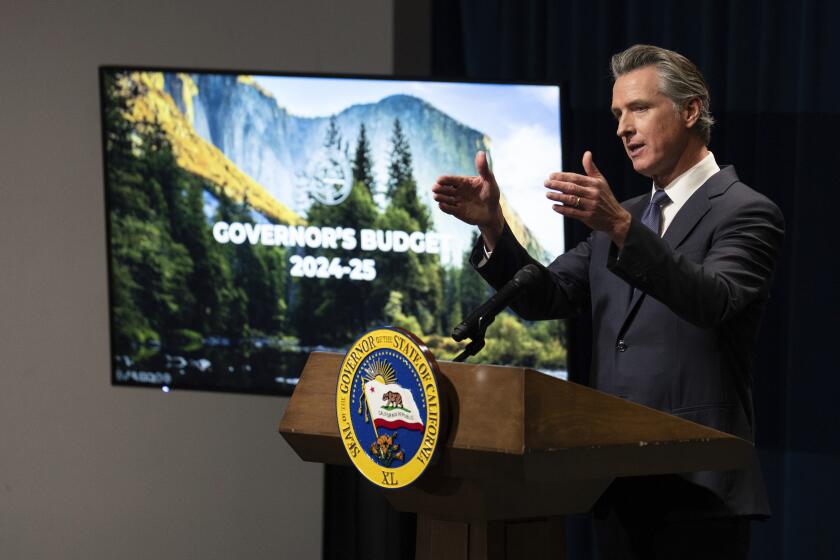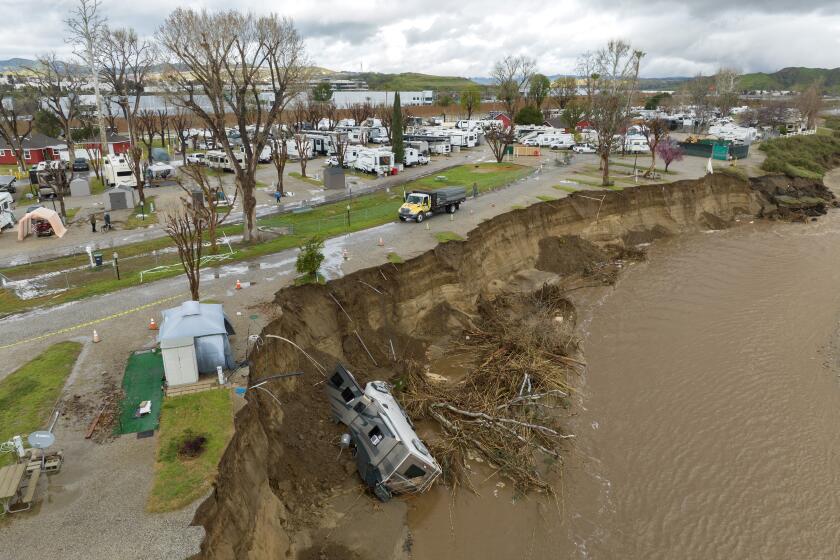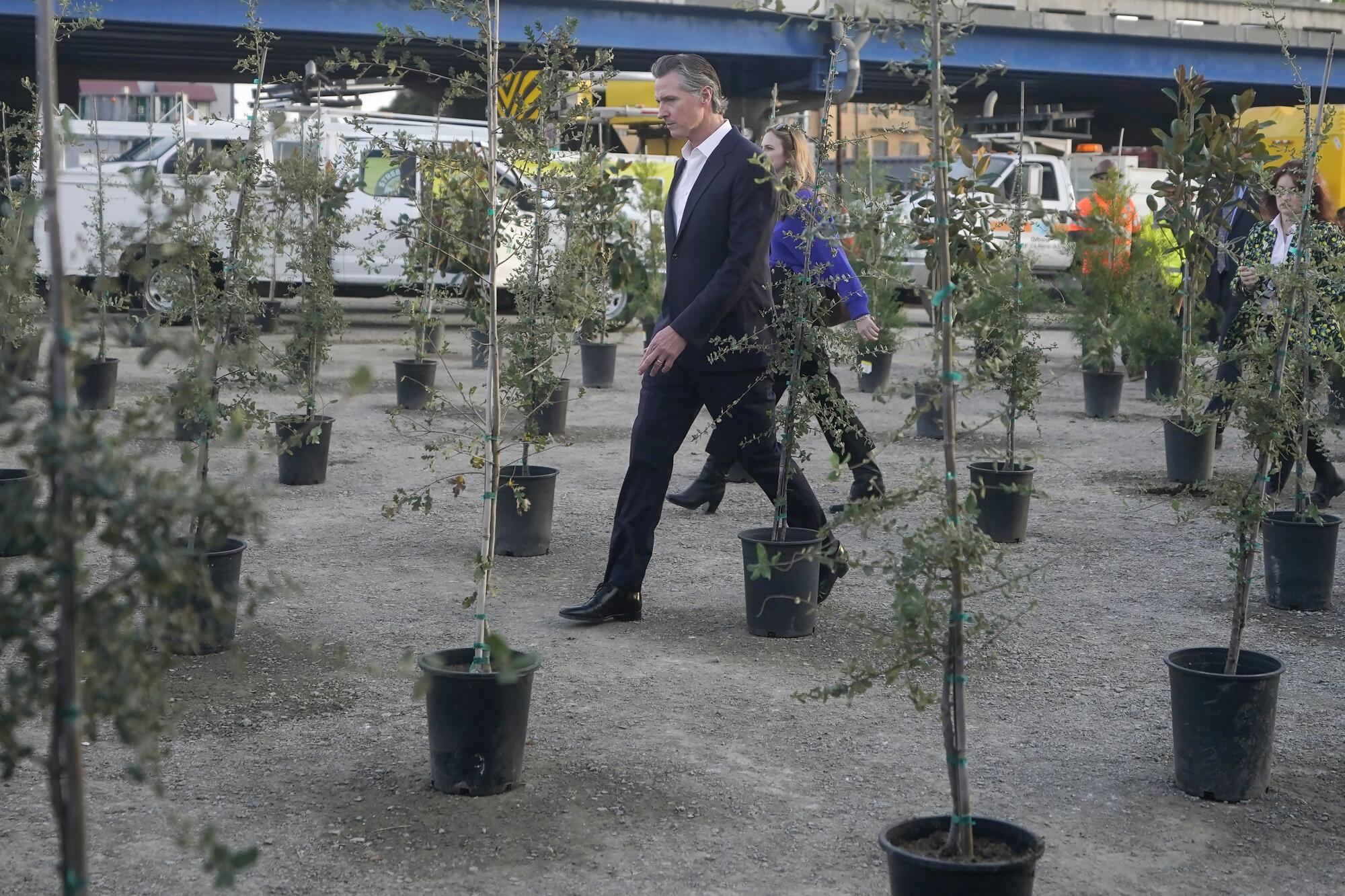
- Share via
California has unveiled an ambitious plan to help combat the worsening climate crisis with one of its invaluable assets: its land.
Over the next 20 years, the state will work to transform more than half of its 100 million acres into multi-benefit landscapes that can absorb more carbon than they release, officials announced Monday. The so-called nature-based solutions will span natural and working lands such as forests, farms, grasslands, chaparral, deserts and other types of ecosystems and urban environments.
Aggressive and impactful reporting on climate change, the environment, health and science.
The first-of-its-kind plan — part of Gov. Gavin Newsom’s California Climate Commitment geared toward helping the state reach carbon neutrality by 2045 — includes 81 targets that will help harness the power of millions of acres across the Golden State.
“We’re setting aggressive and ambitious new targets to use California’s lands to fight the climate crisis,” Newsom said in a statement. “This scale of action is unprecedented, and yet another example of California punching above its weight. From restoring and conserving lands to greening our urban spaces and treating more acres to prevent wildfires, we’re protecting nature and allowing it to work for our communities.”
Among the 2045 targets announced Monday are 33.5 million acres that will be managed to reduce wildfire risk, mostly through fuel-reduction activities and beneficial fire practices. Those practices include cultural and prescribed burns, which are intentional fires designed to sear through overgrown vegetation and other material that can act as fuel for flames.
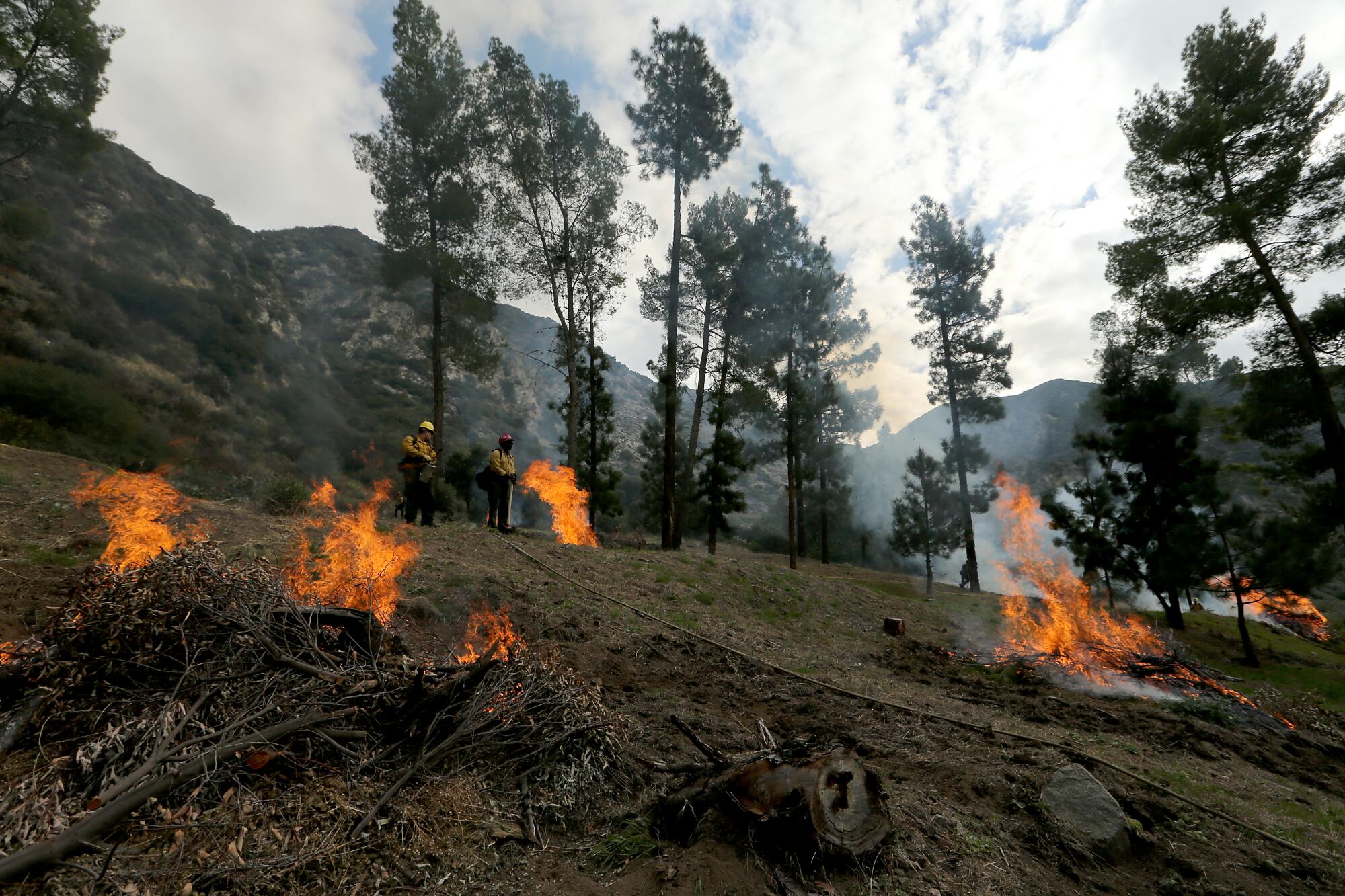
To get there, the state seeks to conduct 1.5 million acres of wildfire risk reduction activity per year by 2030; 2 million acres per year by 2038, and 2.5 million acres per year by 2045, most of which will be applied to forests, shrublands, chaparral and grasslands, which together comprise about 67% of the state.
(By comparison, the California Department of Forestry and Fire Protection completed about 105,000 acres of fuel treatment, including 36,000 acres of prescribed burns during the 2023 fiscal year, according to agency data. The U.S. Forest Service completed about 312,000 acres of combined treatment and burns).
The plan also calls for 11.9 million acres of forestland to be managed for biodiversity protection, carbon storage and water supply protection by 2045, and 2.7 million acres of shrublands and chaparral to be managed for carbon storage, resilience and habitat connectivity, among other efforts.
“We’ve had a really strong environmental conservation movement in California, and we’re clearly strong on climate action, but we haven’t integrated nature into our climate agenda,” said Wade Crowfoot, California’s natural resources secretary. “And so this is really the next tangible step to do that.”
State officials on Monday also announced California’s first new state park in nearly a decade. Dos Rios will span 1,600 acres near the confluence of the Tuolumne and San Joaquin rivers in Stanislaus County. Dos Rios — California’s 281st state park — will open June 12, and will provide preservation benefits as well as floodplain protection, officials said.
Blistering global temperatures have one NASA scientist warning: ‘We could be in uncharted territory.’ Others aren’t so sure.
Crowfoot noted that nature-based solutions are gaining attention not only in the state, but also on the international stage, with the Intergovernmental Panel on Climate Change validating their critical importance in ongoing efforts to stabilize the climate.
“This is all about improving the health and the resilience of our lands, whether that’s forests and deserts and farms and coastal areas,” Crowfoot said. “Healthy, resilient lands ... do a better job absorbing and storing carbon, and avoid emissions.”
But the move was also prompted by the results of California’s 2022 Scoping Plan for Achieving Carbon Neutrality, which analyzed for the first time the amount of greenhouse gas emissions produced and absorbed by the state’s lands. The analysis found that California’s lands currently emit more than they absorb — principally in the form of wildfires, which spew carbon dioxide and other harmful emissions.
In fact, a recent study found that California wildfires in 2020 — the state’s worst fire season on record — released about 127 million metric tons of carbon dioxide equivalent, or almost twice the tonnage of greenhouse gases as the total amount of CO2 reductions made since 2003.
“This shift from carbon sink to carbon emitter is largely due to historic land use decisions, including disconnection from beneficial land management practices utilized by California Native American tribes, and the accelerating impacts of climate change,” the governor’s office said. “Modeling suggests that aggressive near-term efforts to increase climate action on California’s lands will put this sector on the path to course correction.”

The plan also comes on the heels of Earth’s hottest year on record, which has seen scientists and public officials alike sounding alarms about rapid global changes made worse by fossil fuel emissions.
What’s more, the planet is teetering on the brink of 1.5 degrees Celsius (2.7 degrees Fahrenheit) of warming over preindustrial levels — an international benchmark for avoiding the worst effects of climate change — and is already beginning to see worsening wildfires, stronger storms, more severe droughts and accelerating species loss, among other effects.

Reducing carbon emissions is key to preventing such outcomes from getting worse, experts say. The current level of carbon dioxide in the atmosphere is hovering around 425 parts per million — well beyond safe limits.
“The science is very clear: Shifting our lands from a source to a sink requires aggressive near-term action, and the longer we wait, the harder it will become,” said Lauren Sanchez, Newsom’s climate advisor.
Building housing in city centers, planting cover crops and thinning forests could be key strategies for reducing emissions.
Other items outlined in the plan include managing 3.4 million acres of croplands for healthy soils, drought resilience and below-ground biodiversity, as well as conservation. This includes about 152,000 acres per year by 2030; 206,000 acres per year by 2038, and 209,500 acres per year by 2045.
Much of this work will include practices that sequester carbon and provide multiple benefits on working lands, such as increased water holding capacity and improved nutrient cycling, said Karen Ross, secretary of the California Department of Food and Agriculture.
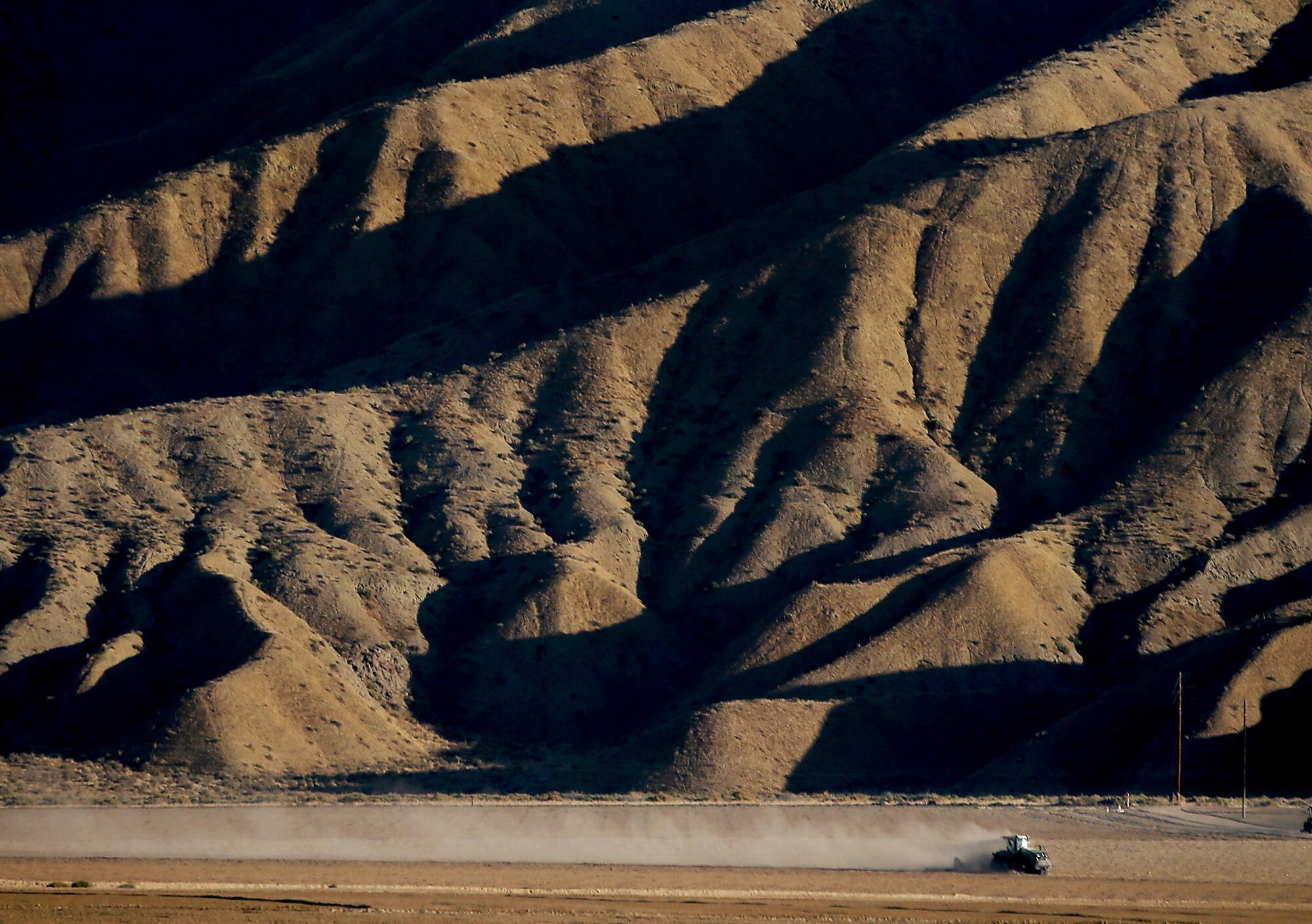
Indeed, agricultural emissions in the United States account for about 10% of the country’s emissions, according to the latest greenhouse gas emission inventory from the U.S. Environmental Protection Agency. The California Air Resources Board estimates that in California, agriculture is the source of 8% of total inventoried greenhouse gas emissions.
“I know that with the continued investment, cooperation and partnerships that we’re building, we can continue to be a leader in the nation of putting these practices on the soil, and being [a] carbon sink,” Ross said.
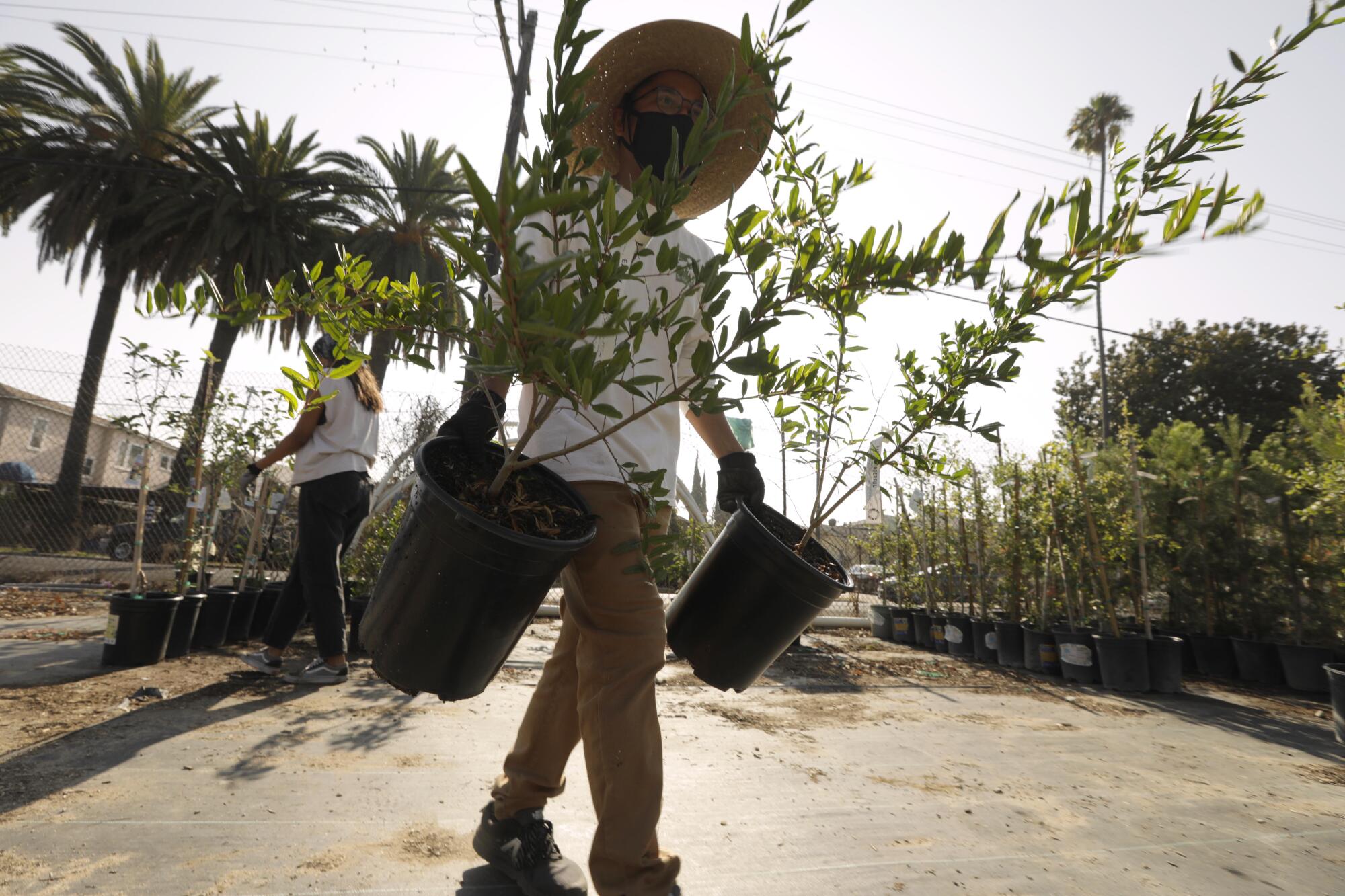
But it’s not just agricultural land that will play a part in the state’s land-use transformation. The program also calls for 4.2 million trees to be planted across California, which will help remove carbon, combat heat and increase access to nature. Studies have shown that areas without trees can simmer several degrees hotter than their leafier counterparts, with poor neighborhoods often bearing the brunt of extreme temperatures.
Trees and vegetation also contribute to more permeable soil that creates more opportunities for water to seep into the ground and replenish groundwater aquifers that have been sapped by agriculture, drought and overuse.
In fact, many of the projects — which will span more than 40 state agencies, tribal partners and stakeholder groups — will have multiple benefits, said Liane Randolph, chair of the California Air Resources Board. For example, healthier forests can mean healthier soils and water tables, as well as reduced wildfire risks and improved air quality.
The solutions were developed “not just to support carbon storage and help achieve carbon neutrality by 2045, but also for the much larger public health and environmental benefits that come with restored and sustained ecosystem health,” Randolph said. She added that the phased rollout of the targets means that many Californians will begin to see benefits long before the 2045 deadline.
Among the trims are clean transportation programs and others that address forest maintenance, watershed resilience, coastal protection and sea level rise.
The governor’s plan also includes 1.6 million acres of grasslands managed to restore native grasslands and protect biodiversity; and 1.5 million acres of sparsely vegetated lands — such as deserts and beaches — managed to protect fragile ecosystems. More than 230,000 acres of wetlands and seagrasses will be managed to protect water supply, deliver carbon benefits and buffer communities from flooding.
The cumulative targets amount to nearly 60 million acres across California by 2045, although it’s possible some projects will overlap, officials said.
There is currently no specific price tag attached to the work. The state only recently saw several of its key climate programs placed on the chopping block as Newsom seeks to close a massive budget gap.
The work will “require significant investment and levels of action collectively,” acknowledged Amanda Hansen, deputy secretary for climate change with the Natural Resources Agency. However, she noted that according to the Scoping Plan, the cost for delivering on the targets is significantly less than the estimated costs for addressing emissions in fossil fuel sectors.
The targets are intended to help guide state policy and investment, Hansen said, and will work in conjunction with the Scoping Plan and with Assembly Bill 1757, a 2022 bill that required the state agencies to collaborate on setting targets for carbon sequestration and nature-based solutions. The Newsom administration has invested $9.6 billion in nature-based solutions since 2020.
Officials described the plan as “among the most comprehensive in the world” and said they believe it can act as a model for other states and regions.
“These climate targets are a big deal for California, for the nation, and for the world,” Sanchez said.
Protecting Los Angeles County from 14 different climate change impacts will cost taxpayers at least $12.5 billion by the end of 2040, according to new research.


